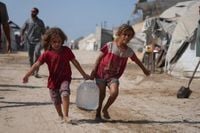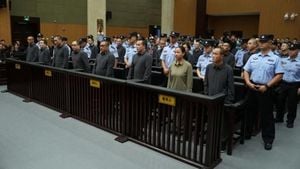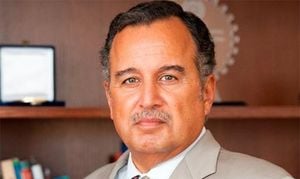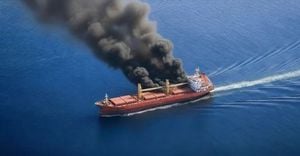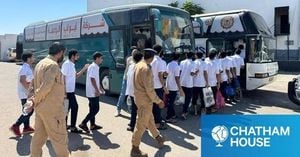On October 1, 2025, a boat carrying international journalists and medical professionals is set to depart for Gaza in a bold attempt to break Israel’s near-total blockade on foreign reporting and medical access. The initiative, orchestrated by the Freedom Flotilla Coalition (FFC), comes at a time when the world’s attention is sharply focused on the besieged territory and the ongoing crisis facing both its press and healthcare systems. The launch, announced on September 29, 2025, marks a significant moment in the struggle for transparency and humanitarian support in Gaza, where, for nearly two years, foreign journalists and international medical workers have been largely barred entry.
The FFC’s mission is clear: provide the international press with the opportunity to report directly from Gaza and deliver urgently needed medical expertise and solidarity to a health workforce that has been decimated by conflict. According to the FFC, journalists onboard the vessel will retain full editorial independence, ensuring that any coverage from the ground is unfiltered and free from external control. The boat is scheduled to join other vessels, including those from the Thousand Madleens to Gaza initiative, in what organizers hope will be a coordinated effort to challenge the blockade and spotlight the dire conditions inside the Strip.
This action is unfolding against a backdrop of unprecedented restrictions and violence targeting journalists in Gaza. As reported by the FFC and corroborated by the Committee to Protect Journalists, Israel has denied foreign journalists entry to Gaza unless they are embedded with its military—a practice described by the press-advocacy group as “unheard of during modern times.” The result has been a near-total press blackout, with international outlets unable to independently verify or report on events inside the territory. Meanwhile, Palestinian journalists have faced extraordinary dangers. Since October 2023, hundreds have been killed and countless more imprisoned, according to the FFC, and the Committee to Protect Journalists has documented a record-setting death rate among media workers in the conflict.
In a joint statement issued last week, Canada, along with several European governments, Australia, Chile, and Qatar, called on Israel to allow foreign journalists to enter Gaza and to permit Palestinian journalists who wish to leave the territory to do so. Ottawa’s call is not new, but it has gained renewed urgency as the conflict drags on and the number of journalists killed continues to rise. "Canada is again urging Israel to allow foreign journalists to enter the Gaza Strip, and to better protect Palestinian journalists whom Israel has killed at a record rate in the territory," reported CityNews Vancouver on September 29, 2025.
The Committee to Protect Journalists has gone further, alleging that "Israel is engaging in the deadliest and most deliberate effort to kill and silence journalists" that the group has ever documented. Israel, for its part, insists it has only intentionally targeted media workers who have assisted Hamas. However, this claim has been rejected by Canada and other governments, who cite specific cases such as the killing of Al Jazeera reporter Anas al-Sharif as evidence that journalists are being targeted regardless of any alleged links to militant groups.
The targeting of journalists is only part of the broader humanitarian crisis in Gaza. The territory’s health system, once fragile but functional, has been systematically dismantled under Israel’s siege and bombardment. The FFC reports that Palestinian medical workers have been killed, abducted, and tortured, while international doctors and nurses have been largely blocked from entering the Strip. Those who do gain entry are often prevented from bringing in desperately needed medical supplies. The consequences for Gaza’s population have been catastrophic, with hospitals overwhelmed and basic healthcare increasingly out of reach for many residents.
Against this grim backdrop, the FFC’s upcoming mission is both a humanitarian and journalistic endeavor. The coalition has called on governments, international institutions, and civil society to support its effort, demand safe passage for the vessel, and act to "bring an end to the genocide, Israel’s illegal and deadly blockade of Gaza, and the occupation of Palestine." The FFC’s language is pointed and reflects the urgency felt by many advocates who see the blockade as a violation of international law and a direct threat to the survival of Gaza’s civilian population.
Meanwhile, advocacy efforts continue on multiple fronts. On September 29, 2025, the group Canadian Journalists for Justice in Palestine brought their campaign to Canada’s Parliament Hill, urging the government to back independent investigations into the deaths of journalists in Gaza and to allow Gaza-based journalists to seek refuge in Canada. These calls for accountability and protection echo the demands of press-freedom organizations worldwide, who argue that the ability to report freely from conflict zones is a cornerstone of democratic societies and essential for holding all parties to account.
The FFC’s boat, scheduled to sail by October 1, is more than just a vessel—it’s a symbol of resistance against censorship and a lifeline for a territory in crisis. The journalists and medical professionals onboard are taking significant risks, not only from the physical dangers of entering a war zone but also from the political and legal challenges posed by attempting to breach Israel’s blockade. Yet, for many, the stakes could not be higher. Without independent reporting, the world remains in the dark about the realities on the ground in Gaza. Without outside medical expertise and supplies, an already devastated health system teeters on the brink of collapse.
As the boat prepares to launch, the international community faces a critical test. Will governments and institutions heed the calls for safe passage and support, or will the blockade—and the silence it enforces—continue? The answer may well shape not only the future of Gaza but also the broader struggle for press freedom and humanitarian access in conflict zones worldwide.
The coming days will reveal whether this unprecedented initiative can pierce the blockade and bring much-needed relief and transparency to Gaza, or whether the barriers to entry—both physical and political—will prove insurmountable. For now, the eyes of the world are on the Mediterranean, watching as a small boat sets out to challenge a blockade and, perhaps, change the story.
